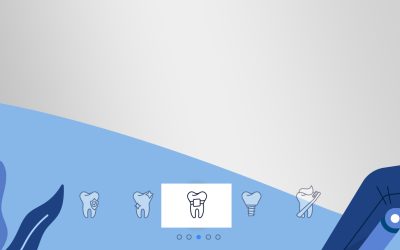Imagine walking into a hospital with no signs, no reception staff, and no one to guide you. This translates into a frustrating customer experience, diminishing trust and engagement from potential patients. That’s exactly how digital users feel when they land on a healthcare website with poor design. In a space where clarity, trust, and speed can literally save lives, a strong UX strategy for healthcare websites can make the difference between maximizing appointment bookings or losing them to competitors. Without integrating UX-focused principles into digital marketing for healthcare, even the best campaigns risk driving traffic to websites that fail to convert visitors into patients.
What Is Healthcare UX?
UX (user experience) in general, refers to the process of creating the interface of any product or service to ensure it is intuitive, reliable, and user-friendly. In the medical sector, this applies to ensuring healthcare websites, apps and tools are accessible, useful, and efficient to all users. A good UX design for healthcare is about the functionality and overall experience given to users when interacting with the product.
Healthcare websites serve a critical role beyond simply providing information. They are often the first point of contact between patients and providers, shaping perceptions and influencing decisions. A well-designed HIPAA-compliant UX is therefore fundamental to the success of any medical-focused site. It ensures visitors can easily seek and access patient care, helping them to take necessary actions, such as making an appointment, promptly.
Key Benefits of a UX Strategy in Healthcare
Many healthcare sites are designed to look clean but often miss functionality. They may prioritize visual design over navigation flow, or overload pages with information that’s not easily readable. Some bury essential functions such as filling out a form or accessing medical records deep under several clicks. Others use medical jargon or vague labels that leave the average user confused.
Implementing a robust UX strategy helps to avoid these pitfalls. It considers how people search, what they expect to find first, and how they behave, especially when under stress or emergencies. A thoughtful UX design guides patients seamlessly throughout their entire online visit, leading to timely care and boosted health outcomes. Key benefits of a patient-centered UX design include:
- Professional UX design showcases credibility, leading to enhanced trust and patient satisfaction
- Higher conversion rates for actions like appointment bookings and newsletter sign-ups
- Improved accessibility for users from diverse demographics
- Reduced errors and misunderstandings for patients
- Support for better health outcomes through easier access to resources
By understanding patient needs, pain points, and addressing them with an effective UX plan, practices can reduce vacant time slots, increase engagement rates, and boost revenue collections.

Key Components of a Practical Healthcare UX Strategy
Several essential elements contribute to well-defined UX design in healthcare:
- Responsive and mobile-friendly design: With many users accessing sites on smartphones or tablets, a scalable web design that adapts automatically to various device sizes is crucial. It must be fully functional on mobiles.
- Accessibility: Implementing healthcare web accessibility features such as screen reader compatibility, alt-text for images, and sufficient contrast ensures that users with visual, auditory, or motor impairments can navigate the site with ease. Accessible design not only improves convenience but also helps to meet accessibility standards such as ADA.
- Fast loading times: Page speed impacts both user satisfaction and search engine rankings as sites that load slowly appear less credible and risk losing visitors.
- Privacy and security: Given the sensitive nature of healthcare data, users expect robust privacy protection measures. Clear privacy policies, secure data handling, multi-facto authentication, and SSL certificates can protect personal data and reduce the chances of data breaches, legal ramifications and penalties.
- Advanced search and filtering: Not all users arrive through the homepage. Many come in through search engines or need to find a specific service quickly. A robust search function, with intelligent filters and auto-suggestions, can help to reach their intended destinations online.
- Immediate access to core actions: Appointment management, provider directories, and urgent care availability should be visible without requiring users to scroll. These functions are essential to the platform’s primary purpose and must be directly accessible to users.
- Clear content organization: A structured layout with headings and consistent design helps users understand the page and navigate content they need quickly.
By prioritizing these essential components of user-centered design, medical sites can transform digital interactions into meaningful experiences that support patient care.
UX Best Practices for Medical Websites
Here are essential steps healthcare organizations should follow for an effective UX strategy:
- Conduct User Research
Begin by collecting detailed insights about your users and their needs through methods such as interviews, surveys, and website analytics. Focus on understanding patient demographics, their common concerns, and how they interact with the current website. Different groups including elderly patients, caregivers, or healthcare professionals may have unique requirements to be considered for the design process.
- Define Clear Goals and Objectives
To ensure optimized designing workflow, set targeted goals such as improving appointment booking efficiency or enhancing content clarity informed by research details. Clear objectives guide design decisions and provide benchmarks to measure success.
- Map the User Journey
Visualize the path users take, right from arriving on the site to completing their goals. Identify any pain points or obstacles in this journey. This step helps designers prioritize areas needing improvement. For instance, if users frequently abandon the appointment booking process midway, that flow needs redesign.
- Design with Accessibility in Mind
Ensure the website complies with recognized accessibility standards, such as those outlined in the WCAG framework. Accessibility goes beyond legal obligation as it broadens the website’s reach and improves overall usability.
- Prioritize Content Clarity and Organization
Healthcare information can be complex to understand for average readers due to medical terminology and jargon. Use plain language to simplify medical content so visitors of all backgrounds can understand and act on the information provided. Organize content logically by breaking it into manageable sections and use headings and bullet points to enhance readability. Clear calls to action, such as “Book an Appointment” or “Contact a Specialist,” should be prominent and easy to find.
- Implement Responsive Design
Ensure the website delivers optimal performance across all device types, with a focus on mobile optimization. Minimize load times by compressing images, optimizing scripts and implementing CDNs. Responsive design for clinics ensures users have a consistent experience whether on desktop or mobile devices.
- Test Early and Often
Conduct usability testing with real users to spot problems that internal teams may miss during the design process. Run usability tests throughout different phases of development, including early wireframes and final builds, to gather feedback and make iterative improvements. Regular testing helps ensure the site meets users’ expectations effectively.
- Monitor and Update Continuously
A successful UX strategy is not a one-time project; it requires ongoing attention to adapt to changing user behaviors and trends. Website owners must routinely analyze user behavior, listen to user feedback, and keep track of new technologies. As healthcare demands shift, the site should be updated to stay aligned with user needs and industry standards.
Unlock UX Excellence with Outsourcing
In healthcare, trust and clarity are not optional. They begin at the digital level, often before real-life interaction on websites. A strong UX strategy integrated during the healthcare website development stage ensures that the site supports, rather than hinders, what patients need to do. Outsourcing healthcare website development can be a strategic advantage for medical organizations aiming to deliver exceptional digital experiences without overextending internal resources. By partnering with specialized UX professionals, practices gain access to diverse expertise and the latest tools to create an efficient digital environment that truly reflects the quality of care they provide.




